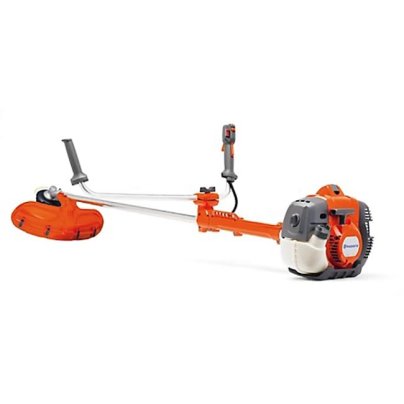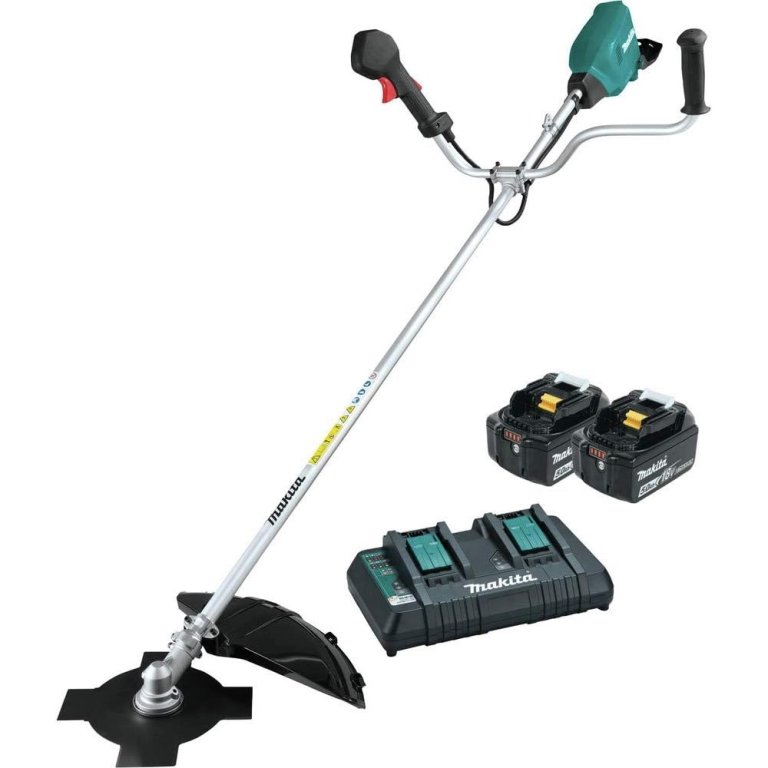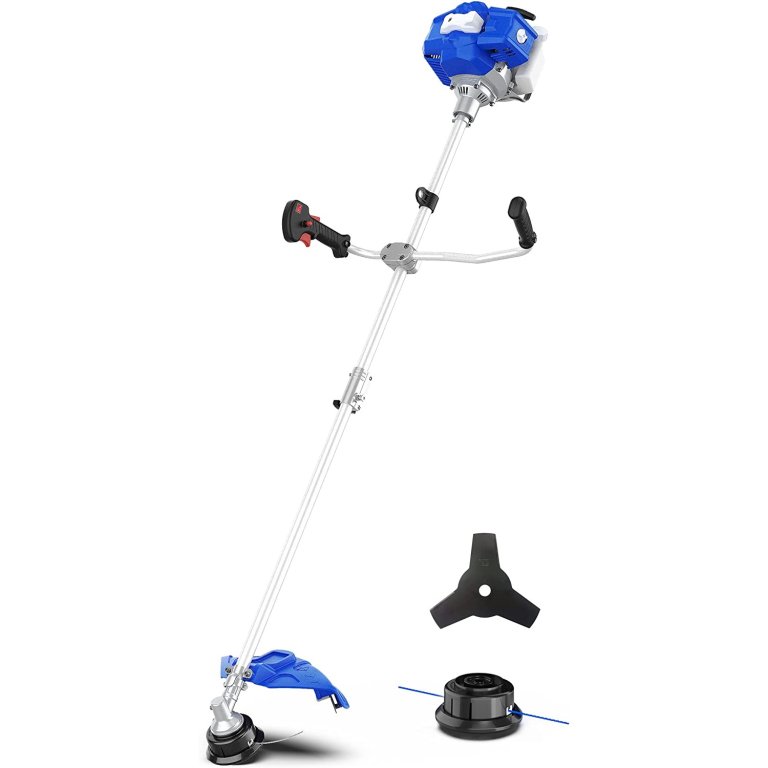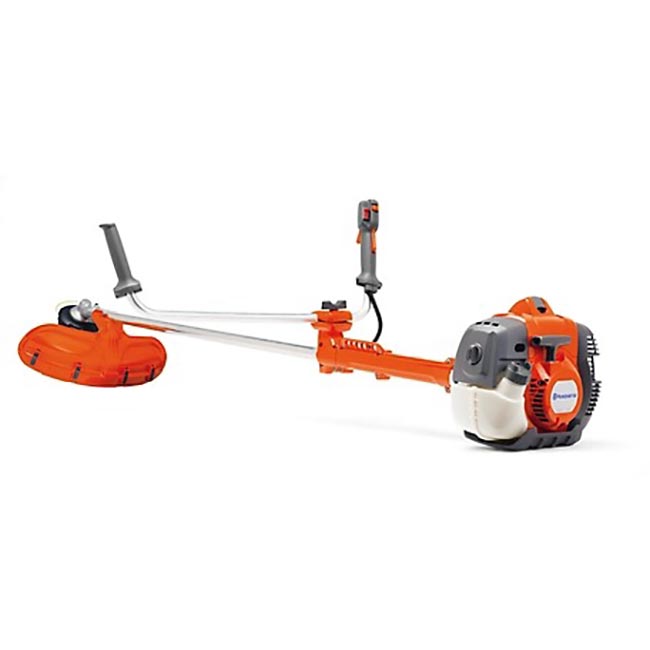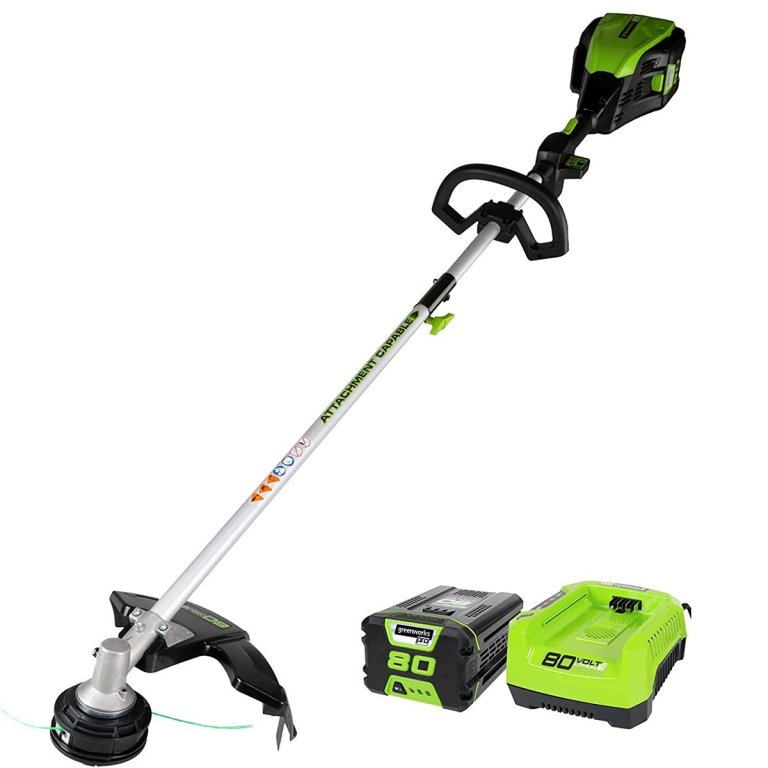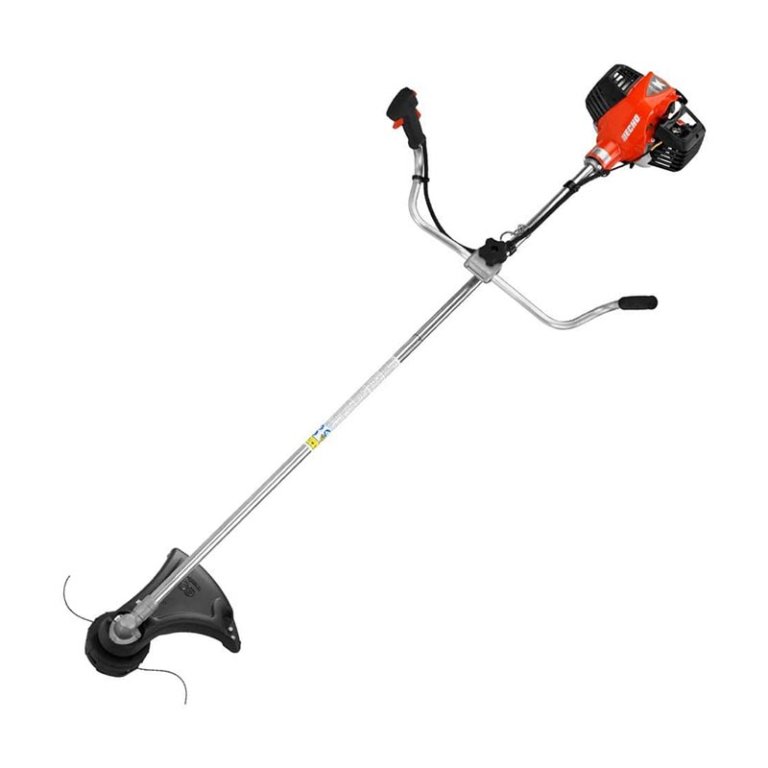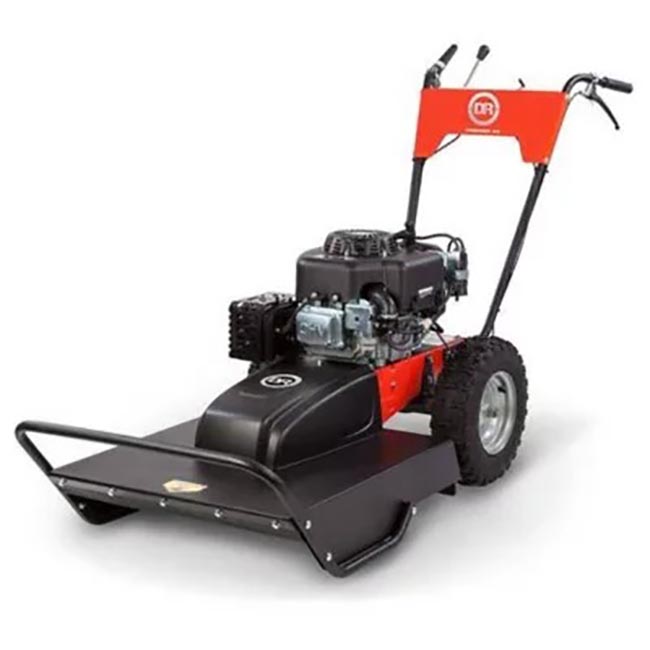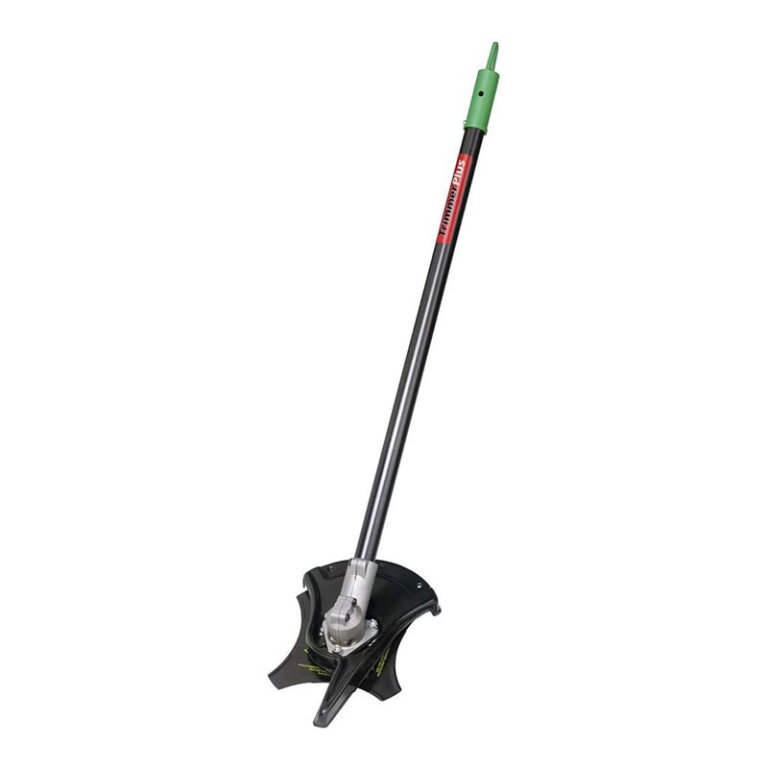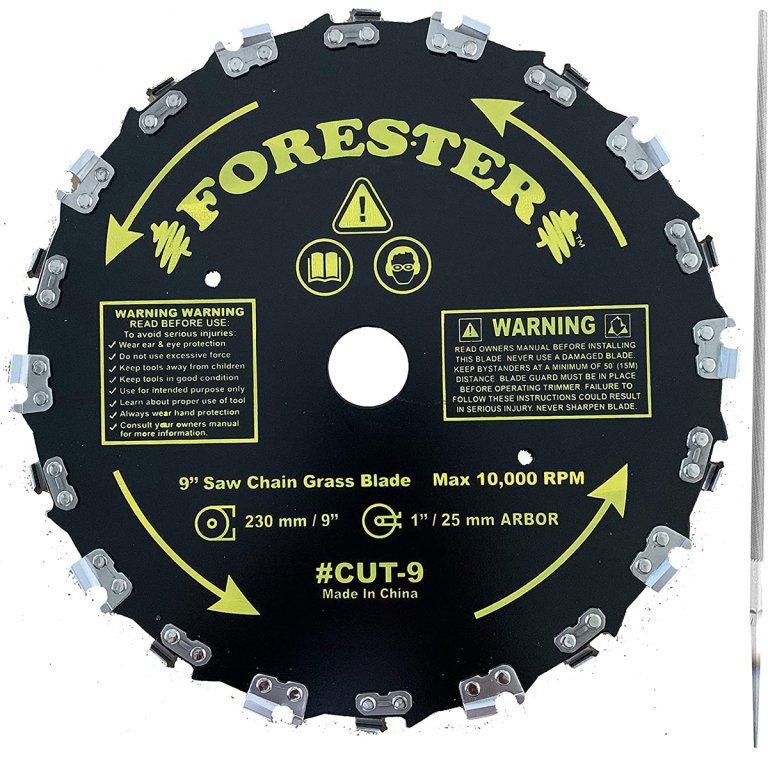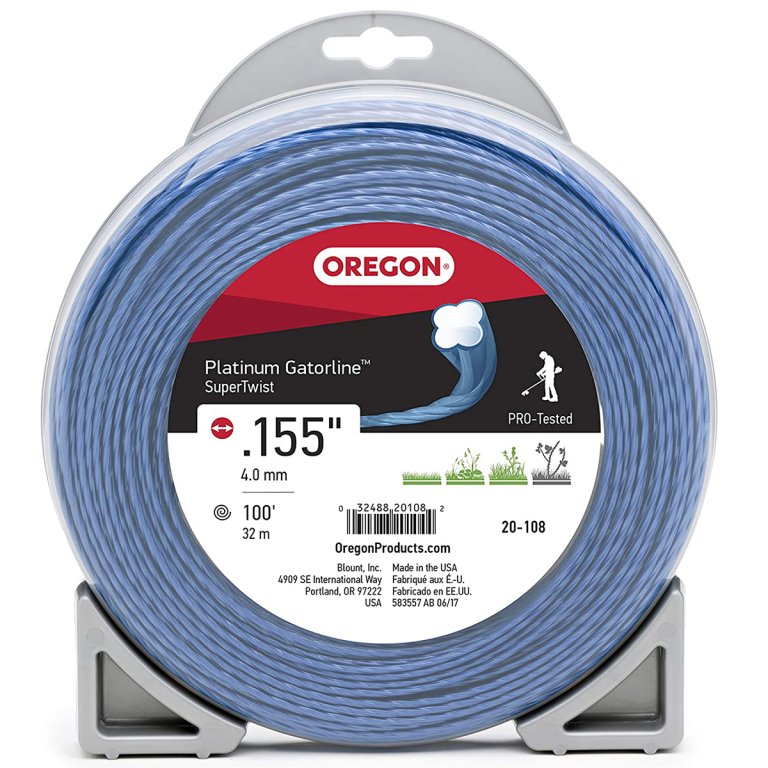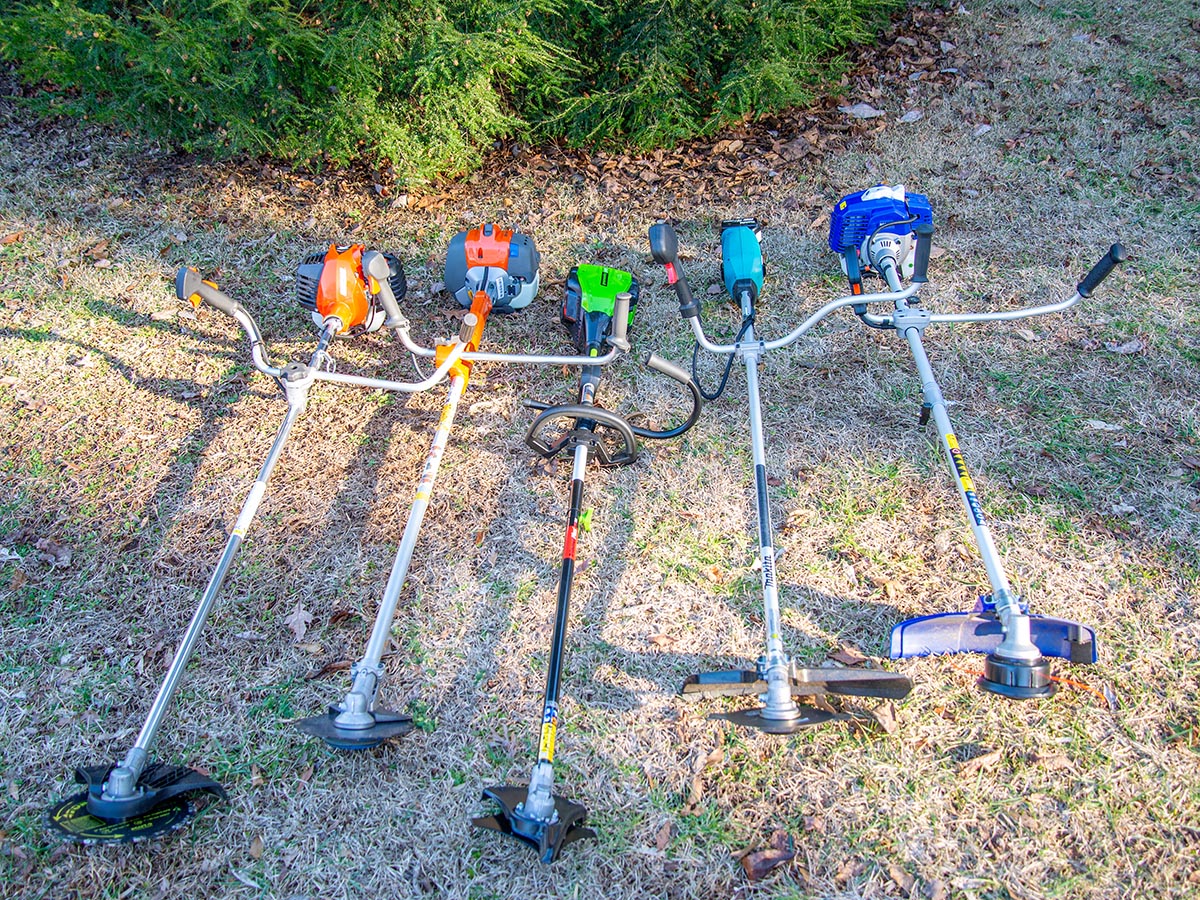
We may earn revenue from the products available on this page and participate in affiliate programs. Learn More ›
Brush cutters can easily grind through overgrown fields, up steep hillsides, and into deep ditches where regular lawn equipment doesn’t work so well. When a lawn mower and weed wacker won’t cut it, a brush cutter might be the answer.
In my years as a landscaping pro, I used heavy-duty handheld and walk-behind brush cutters that I wouldn’t necessarily choose as a homeowner. For this guide, I researched more than 40 brush cutters of all sizes and types before choosing the following models for testing. I’ve included walk-behind and handheld brush cutters (of both gas- and electric-powered varieties) as well as a universal brush cutter attachment, brush saw blade, and heavy-duty trimmer line. No matter the size of your property, if you need to deal with overgrown grass or tough, woody brush, this roundup of the best brush cutters should have something to fit your project needs and budget.
- BEST OVERALL: Makita 36V LXT Brushless Brush Cutter Kit
- BEST BANG FOR THE BUCK: Wild Badger Power 52cc Straight Shaft Brush Cutter
- BEST GAS BRUSH CUTTER: Husqvarna 336FR Gas Brush Cutter
- BEST ELECTRIC BRUSH CUTTER: Greenworks Pro 80V 16-Inch Cordless String Trimmer
- BEST HANDHELD BRUSH CUTTER: Echo X Series SRM-3020U Gas Brush Cutter
- BEST WALK-BEHIND: DR Power Premier 26 Field and Brush Push Mower
- BEST ATTACHMENT: Troy-Bilt BC720 TrimmerPlus Add-On Brush Cutter
- BEST BRUSH CUTTER BLADE: Forester Chainsaw 20-Tooth 9-Inch Brush Blade
- BEST BRUSH CUTTER STRING: Oregon Platinum Gatorline SuperTwist Trimmer Line
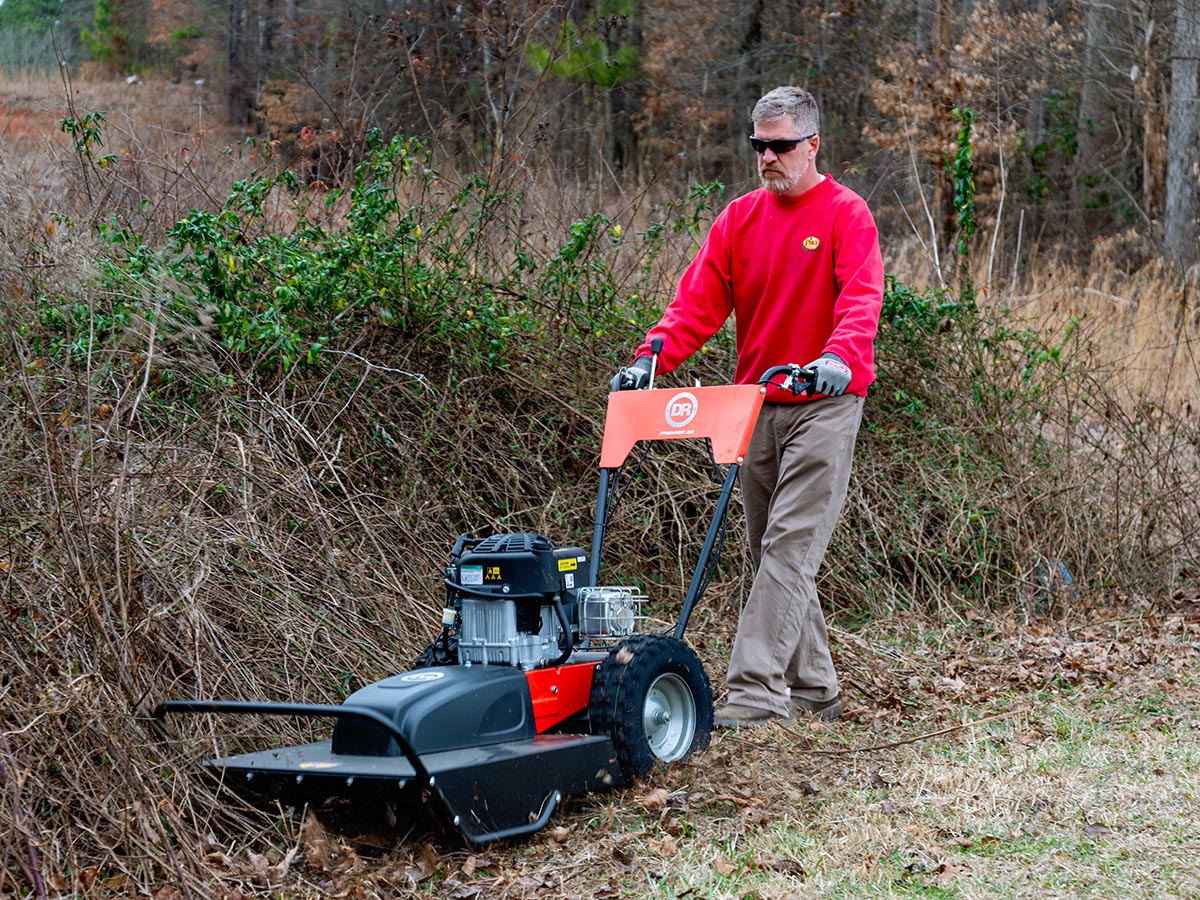
Before You Buy a Brush Cutter
A fully equipped brush cutter can be an expensive, heavy-duty machine. Compared to typical battery-powered string trimmers and weed wackers, the best brush cutters are heavier and more powerful (as well as more expensive). Depending on the density of the brush you need to cut and the tools you have at your disposal, with the help of attachments and adapters, you might be able to do the job with tools that are already in your shed. For example, some string trimmers can be converted into brush cutters, though their power will be limited.
While a high-quality string trimmer can knock down patches of dense lawn weeds on occasion, they’re better suited for simple yard maintenance rather than slicing through thick brush. If the weeds are extra tough, the area is large, and trimming needs to be done frequently, it makes sense to invest in a dedicated brush cutter instead.
How We Tested the Best Brush Cutters
After researching more than 40 different brush-cutting tools, I settled on nine options for testing. These include a heavy-duty walk-behind model, several gas- and battery-powered handheld brush cutters, and an assortment of string trimmer attachments. I tested both the walk-behind and handheld machines, using all the equipment they came with. This included fixed blades, string trimmers, and for some, a heavy-duty trimmer line. I used Greenworks’ attachment-capable trimmer to test the universal brush-cutter attachment.
Each test was performed on 1,000 square feet of coarse, grassy weeds, followed by another 1,000 square feet of woody brush. Afterward, I recorded my observations, beginning with the assembly process, then starting the machine, operating it, and performing the required maintenance. I scored all products on a rubric before giving each an award to highlight its standout features.
Testing Stats
- Products tested: 9
- Time spent testing: 11 hours
- Tests performed: 5
- Average price: $456.53
Our Top Picks
A good brush cutter can help you tidy up those overgrown corners, but with so many options, it can be difficult to choose the best tool for the job. Read on to find out how each of these picks performed in hands-on testing, as this might help you figure out which brush cutter is best for your cleanup project.
Best Overall
Makita 36V LXT Brushless Brush Cutter Kit
What We Like
- Eco-friendly; does not require gas and produces zero emissions
- Comes with comfortable molded grips, a brushless motor, and a variable-speed trigger for user-friendliness
- Steel drive shaft boosts tool durability and minimizes handle vibration
- Extremely comfortable backpack-style harness system minimizes user fatigue
What We Didn’t Like
- 30-minute runtime may not be adequate for larger properties or tougher conditions
- Most expensive handheld brush cutter in the test group
Product Specs
- Type: Handheld
- Cutting width: 9 inches
- Weight: 15 pounds
This Bob Vila Approved product carries our brand’s highest level of recommendation.
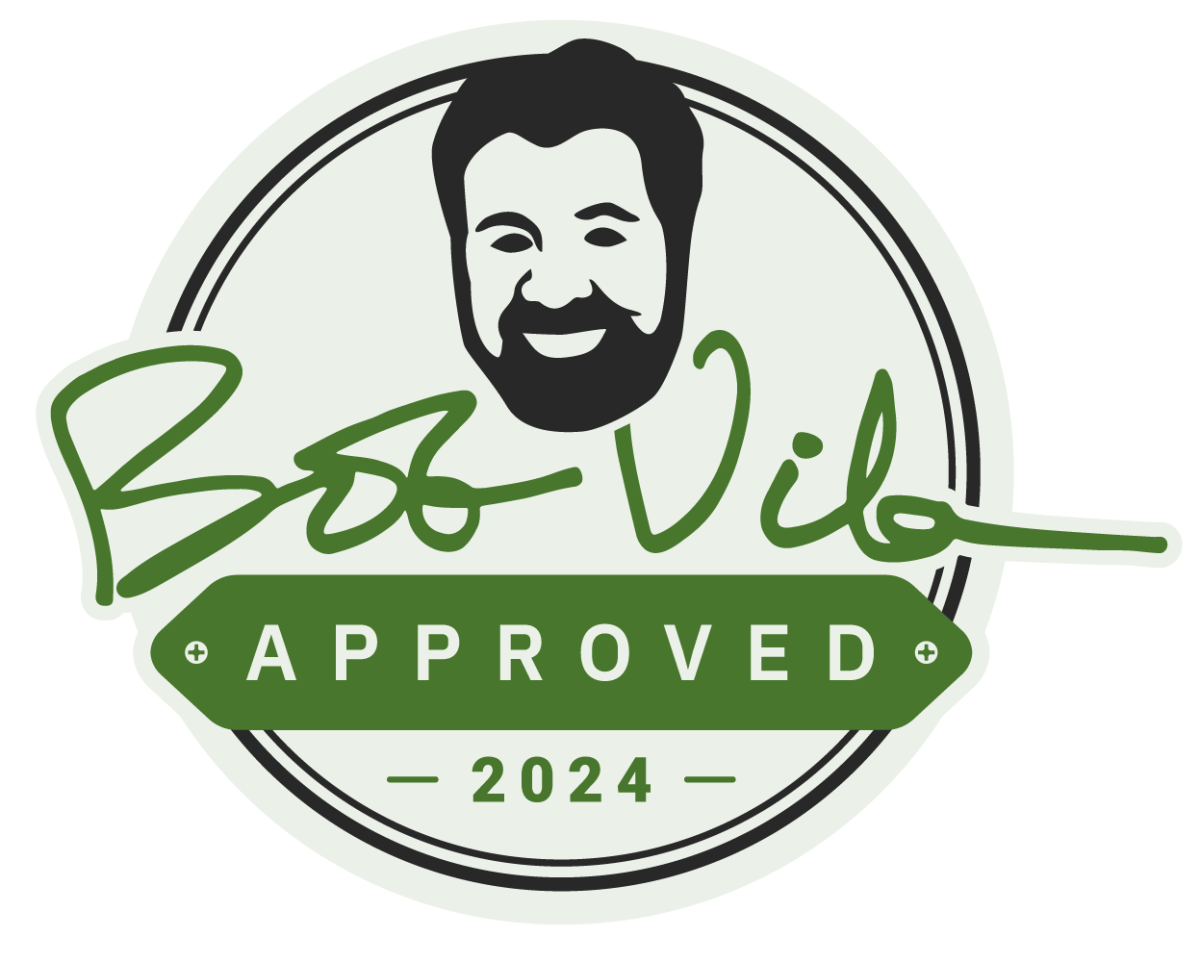
Bob Vila Approved recognizes the household and DIY products that impressed us most in our real-world testing and that exemplify core values of the Bob Vila brand, including craftsmanship, innovation, and value for the dollar. Winners of this designation come recommended by our professional review team and are personally approved by Bob Vila.
Our Ratings: Ease of Use 4.7/5; Noise 5/5; Effectiveness 4.3/5; Durability 4/5; Value 4.5/5
Powered by two 18-volt batteries, the Makita LXT brush cutter comes equipped with bicycle-style handlebars, an efficient brushless motor, a 9-inch steel-blade cutting head, and a variable-speed trigger. The steel drive shaft produces low vibration, minimizing user strain. It also features Automatic Torque Drive Technology that automatically adjusts the motor’s output to adapt to tougher cutting conditions and to lengthen its runtime. It weighs in at just 16.8 pounds with the batteries and cutting head installed.
The Makita 36V LXT earned Best Overall due to its speedy efficiency, easy operation, and lightweight comfort. In my tests, the batteries provided 30 minutes of nonstop cutting per charge through coarse grass, vines, brambles, shrubs, and tree seedlings up to 0.75 inches thick. The included 4-tooth circular steel blade held its edge perfectly, even after a few encounters with unseen rocks. This blade provided enough versatility to cut through a wider variety of materials than either a heavy-duty trimmer string or a sawtooth cutter could offer.
The unit also came equipped with the best harness system of the testing group. Well padded and easy to adjust, the harness system fit like an extremely comfortable backpack. Combined with the light weight of the machine, it eliminated any notion of fatigue and made working a pleasure.
The low power/speed setting was perfect for cutting tough woody material, while the faster speeds were best while moving quickly through coarse weeds and brambles. The half hour runtime was longer than I expected but is still a limiting factor for those with large properties. Some users may require additional batteries to continue working while the depleted set recharges. Though it may not be the best option for those who regularly cut large areas of thick, woody brush, this was an excellent general-purpose brush cutter for a wide range of conditions and brush types.
Read our full review: Makita 36V LXT Brushless Brush Cutter Kit
Get the Makita brush cutter at Amazon, The Home Depot, or Acme Tools (tool only).
Best Bang for the Buck
Wild Badger Power 52cc Straight Shaft Brush Cutter
What We Like
- 52 cubic centimeter (cc) 2-cycle gas engine delivers ample power for heavy-duty cutting
- Blade adapter works with other types of rigid brush-cutting blades
- 2-in-1 kit includes a 3-tooth brush cutter head as well as a string trimmer head
- Bicycle-style handlebars and nylon harness system boost user comfort and control
What We Didn’t Like
- Heavier, louder, and harder to start than other brush cutters in the test group
- Design and components are not as efficient or robust as more expensive models
Product Specs
- Type: String trimmer conversion
- Cutting width: 18 inches (maximum)
- Weight: 19.5 pounds
Our Ratings: Ease of Use 4/5; Noise 4/5; Effectiveness 4.3/5; Durability 4/5; Value 4.5/5
For a budget-friendly brush cutter, we know of no better option than the Wild Badger Power brush cutter. It does double duty as both a brush cutter and a string trimmer for cutting fine lines as well as coarse weeds and brush. This 19-pound handheld cutter includes a harness and bicycle-style handles to increase stability and control while preventing fatigue. It features a 52cc 2-cycle full-crank engine for taking on small to large projects, and the straight aluminum shaft is lightweight enough for long periods of use.
The Wild Badger Power brush cutter offered a lot of cutting ability at an affordable price, but it lacked the comfort features and mechanical refinement of more expensive options. The big 52cc engine made it the heaviest of all of the handheld brush cutters I tested. The weight was somewhat mitigated by the included shoulder and waist strap, but the straps themselves were flimsy and not well padded. Assembly involved attaching the bicycle-style handle, as well as choosing and installing one of the two included cutting heads, which only took a few minutes.
It started like other 2-cycle machines: purge, choke, and pull the recoil cord. It took five to seven pulls every time. The big engine was a bit louder than others in the test, which I expected, but the actual cutting power seemed about the same or maybe a little lower than the Husqvarna and Echo models reviewed below. Equipped with the string trimmer head, it worked well on overgrown grass and coarse weeds, and the 3-tooth steel blade was good for brambles and vines. Neither of the included heads did a great job on seedlings and weedy shrubs thicker than half an inch in diameter, but the machine is capable of supporting a sawtooth brush blade for users who need that capability.
Get the Wild Badger Power brush cutter at Amazon, Lowe’s, or Tractor Supply Co.
Best Gas Brush Cutter
Husqvarna 336FR Gas Brush Cutter
What We Like
- 34.6cc gas engine produces ample torque and blade speed to cut through tough brush
- Kit includes a string trimmer head, 3-tooth grass blade, and 22-tooth saw blade for a variety of cutting needs
- Consistently easy to start; low vibration while operating reduces user fatigue
- Well padded and easy-to-adjust backpack-style harness for extended comfort
What We Didn’t Like
- Brush blade assembly limits the depth of cut to about 2 inches
- Unclear instructions for assembling the rigid blades; I had to resort to a web search
Product Specs
- Type: Handheld
- Cutting width: 18 inches (string) or 9 inches (blade)
- Weight: 18 pounds
Our Ratings: Ease of Use 4.5/5; Noise 5/5; Effectiveness 4.5/5; Durability 5/5; Value 4.5/5
The Husqvarna 336FR is great for those who need a powerful, versatile, and dependable gas brush cutter. It packs an easy-to-start 34.6cc engine, bicycle-style handlebars, a well-padded backpack-style harness system, and three different cutting heads. While the string trimmer head and 3-tooth grass blade both proved to be powerful attachments, I spent extra time working with the 9-inch brush blade.
The instructions for assembly of the handlebar and string trimmer head were perfectly clear in the printed directions. But when it came time to change over to a rigid blade, I had to resort to an internet search. I was able to use the rigid grass blade with the same guard as the string trimmer, but in order to work with the brush saw, I had to install a different blade guard. All of the parts were included for all three configurations. As it turned out, the assembly for rigid blades proved best suited for grass and thin-to-moderate woody stems, as the donut-shaped fitting between the blade and the nut restricts cutting depth to about 2 inches. Also, the donut is made of plastic, and it showed signs of wear after an hour of cutting.
The brush blade itself was outstanding. With its relatively thin kerf and 22 chisel teeth, it buzzed through woody stems like a knife through warm butter. The special blade guard allowed more of the blade to be exposed, which was convenient for moving through dense stands of brush. The potential downside of the smaller guard was flying debris. In addition to safety glasses, I wore a forestry-style hard hat with earmuffs and a mesh face shield for protection. The motor didn’t bog down at all, even when cutting hardened, dry wood, and I always felt in control with the handlebars. As a side note, in terms of comfort and ease of adjustment, the harness system was right up there with our Best Overall pick, the Makita.
Get the Husqvarna brush cutter at Tractor Supply Co. or Mowers At Jacks.
Best Electric Brush Cutter
What We Like
- Efficient brushless electric motor provides up to 45 minutes of battery life
- Included string-trimmer attachment provides added versatility
- Features a variable-speed trigger to optimize battery power
- Lightweight construction minimizes strain on the user
- Battery and charger included; rapid charging
Product Specs
- Type: Handheld
- Cutting width: 16 inches
- Weight: 11 pounds
Our Ratings: Ease of Use 5/5; Noise 3.7/5; Effectiveness 4.5/5; Durability 4/5; Value 4.5/5
The attachment-capable Greenworks 80-volt powerhead with string trimmer attachment is a good investment for those with limited storage space. It eliminates the need for fuel handling and gas engine maintenance, and it works just as well with daily use as it does after months in storage. Its affordability, adaptability, ease of operation, and impressive battery life earned this string trimmer the award Best Electric Brush Cutter. It’s a great choice for regular lawn maintenance and seasonal cleanup projects on smaller properties.
The electric motor produced ample torque and speed to drive both the string trimmer head and the brush cutter through overgrown grass and light brush. In its base configuration, it served best as a conventional string trimmer with just enough power to take out the occasional tree seedling or vine that found its way into my border plantings. When equipped with a brush cutter attachment (see my review of the Troy-Bilt brush cutter attachment below), it easily tackled thicker vines, blackberry canes, and woody brush up to a half inch in diameter.
I worked through one full charge with the string trimmer attachment and a second charge with the brush cutter attachment. The 80-volt 2-amp-hour battery provided 15 to 20 minutes of nonstop runtime per charge. This would not be enough for big yards, but it was plenty for a few thousand square feet. Recharging the battery took about 30 minutes. The included harness system was a simple diagonal shoulder strap, unlike the shoulder/waist-strap combos and backpack-style harnesses that come with heavy-duty cutters. It was fairly comfortable thanks to the light weight of the machine. The variable-speed trigger worked smoothly, and the cutter produced very little vibration during operation.
Get the Greenworks brush cutter at Amazon or Greenworks Tools.
Best Handheld Brush Cutter
Echo X Series SRM-3020U Gas Brush Cutter
What We Like
- Fast starting with just 3 pulls; bellows intake allows for hot restarting
- Suitable for thick brush, branches, and roots; maximum cutting width of 20 inches
- Trimmer head comes prespooled with 0.095-inch black diamond trimmer line for maximum durability
- Includes the required conversion kit for attaching a steel brush cutter blade
What We Didn’t Like
- Changing from string trimmer to rigid blade is more complicated and time-consuming than other models
- Diagonal harness system is more difficult to adjust and less comfortable than our top pick
Product Specs
- Type: String trimmer conversion
- Cutting width: 20 inches
- Weight: 15.5 pounds
Our Ratings: Ease of Use 4.3/5; Noise 4/5; Effectiveness 4.3/5; Durability 5/5; Value 4.5/5
The Echo X Series string trimmer can clear a wide swath of overgrown grass, vines, and brambles, and it packs plenty of torque to take down thick brush and small trees when outfitted with a steel brush blade. This gas-powered brush cutter features a simplified starting system that only requires three pulls. It also boasts a high-output 30.5cc 2-stroke engine that punches above its weight. It comes equipped with a SpeedFeed 450 string trimmer head with a maximum cutting width of 20 inches, and for heavy-duty work, buyers can use the included 25-millimeter steel blade conversion kit.
In my tests, when I equipped the Echo brush cutter with the string trimmer head, it was one of the fastest handheld models in the overgrown grassy areas. When I changed over to the Forester brush cutter (reviewed below), it had no trouble cutting through trunks from less than 0.5 inches up to 3 inches thick in mere seconds. It was extremely easy to start—never requiring more than 3 pulls—and it produced incredible power for the engine size.
I only took points away from this model for two reasons. First, the assembly process was a bit more involved than any of the others. In addition to attaching the handlebars, I had to connect the throttle cable and ignition wires. Not a huge issue, but those who are unfamiliar with 2-cycle engines may be intimidated. The other negative point was the diagonal shoulder strap and waist belt system were unnecessarily difficult to adjust. The good thing is that once these issues are resolved, you’ll never have to deal with them again.
With an excellent weight-to-power ratio, an easy-starting motor that delivers lots of cutting power, and a well-balanced and easy-to-control design, the Echo brush cutter could be the best handheld brush cutter for extended use. The competitive price point sweetens the deal even more.
Get the Echo brush cutter at The Home Depot (SpeedFeed 450 string trimmer head) or Acme Tools (SpeedFeed 400 string trimmer head).
Best Walk-behind
DR Power Premier 26 Field and Brush Push Mower
What We Like
- Heavy-duty engine and large mowing deck; ideal for frequent brush-cutting projects
- User-friendly self-propelled system with 3 forward speeds and 1 reverse speed
- Large, knobby, air-filled tires provide excellent traction on sloped ground
- Floating deck allows the cutter to glide through weeds and brush up to 2 inches thick
What We Didn’t Like
- Big, heavy machine takes up more storage space and is more difficult to transport
- Delivered via tractor trailer, which could be problematic for some buyers
Product Specs
- Type: Walk-behind
- Cutting width: 26 inches
- Weight: 237 pounds
Our Ratings: Ease of Use 4.3/5; Noise 4/5; Effectiveness 4.7/5; Durability 5/5; Value 4.5/5
For bigger and more frequent brush-cutting jobs such as rough mowing and trail maintenance, the best choice is often a walk-behind brush cutter. This one from DR Power is one of the lightest and most maneuverable walk-behind brush cutters available, and it offers the power and performance required for big jobs.
The DR Power Premier 26 boasts a 10.5 horsepower gas engine and a 26-inch brush deck designed to handle all kinds of material up to 2 inches thick. Large sealant-filled tubeless lugged tires and a 4-speed geared transmission (three forward speeds, one reverse) make it easy to maneuver through rolling terrain. The three-sided cutting deck ensures that clippings are well mulched, leaving behind a nice, neat appearance with no windrows.
Our DR Power Premier 26 brush cutter shipped directly from the factory and was delivered on the back of a tractor trailer with a lift gate. We experienced a few delays in shipping that made the process a bit more cumbersome than it should have been, but the equipment arrived in perfect condition. The delivery driver placed it in the requested location, even though I was not around at the time of delivery.
Assembling the unit was easy. I just had to pull off the packing material, attach the handlebar, and secure the throttle and clutch cables. After adding oil and gas, the engine started on the third pull. I mowed nearly half an acre of overgrown brush on a deeply rutted powerline right-of-way, including 7-foot blackberry thickets and tree saplings up to 1.5 inches thick.
As I mowed in first and second gears, the floating deck glided smoothly over everything without becoming entangled in the debris, while the weight of the machine gave the wheels excellent traction. The blade did not bog down at any point. Maneuverability was excellent overall, although I got caught up for a moment on a hidden log beneath layers of old growth. Cutting went much faster, and the finished results were better looking than simply “knocking down” the brush with a handheld brush cutter. Just bear in mind that this big machine requires a lot more storage space, and you’ll need a pickup truck and landscape trailer to move from job to job.
Get the DR Power brush cutter at Tractor Supply Co., Northern Tool + Equipment, or Mowers at Jacks.
Best Attachment
Troy-Bilt BC720 TrimmerPlus Add-On Brush Cutter
What We Like
- Compatible with most attachment-capable gas and electric powerheads
- 4-tip steel blade is suitable for tough vines, thick brush, and coarse weeds
- Shoulder strap included to limit strain on your back and arms
- Included J-bar handle and adapter for optimal user control and safety
What We Didn’t Like
- The brush cutter blades on this attachment create a loud noise during use
Product Specs
- Type: Cutter attachment
- Cutting width: 8 inches
- Weight: 2 pounds
Our Ratings: Ease of Use 5/5; Noise 4/5; Effectiveness 4.5/5; Durability 4/5; Value 4.5/5
The Troy-Bilt TrimmerPlus brush cutter is a universal attachment compatible with most gas-powered and cordless electric powerheads. Assembly only takes a few seconds, and the four-tip steel blade makes quick work of dense brush and tall, thick weeds. The package includes a shoulder strap for added support and a J-bar handle for increased control and comfort while operating the brush cutter. The 1.65-inch inner coupler tube and the 0.20-inch square drive-shaft connector both interface with most attachment-capable powerheads.
This attachment is highly durable, easy to install, and a good value. I tested the attachment on the Greenworks 80V trimmer. The brush cutter shaft slid into the powerhead shaft and clicked securely into place by means of a spring button. Four screws held the J-bar handle in place on the upper shaft of the powerhead, just below the trigger handle. Since the trimmer came equipped with a shoulder strap, I didn’t need to install the one that came with the brush cutter.
The Troy-Bilt brush cutter attachment is a lightweight tool that is ideal for the lightweight powerhead. It worked extremely well for cutting the coarse weeds, tough vines, and woody brush up to 0.5-inch in diameter. Although the blades didn’t appear to be all that sharp, the blade speed and torque ensured clean, efficient cutting. The brush guard on the left side of the blade was a nice addition for protection from flying debris.
The only thing I didn’t like was the high-pitched noise that it made, which may not have been noticeable if I had been working with a gas powerhead. Always check the powerhead owner’s manual before purchasing new attachments.
Get the Troy-Bilt brush cutter at Amazon, Lowe’s, or Troy-Bilt.
Best Brush Cutter Blade
Forester Chainsaw 20-Tooth 9-Inch Brush Blade
What We Like
- Suitable for thick, woody brush; blades remain sharp with heavy use
- Includes a 0.1875-inch round file to resharpen the blade to extend lifespan and increase efficiency
- Built with a 1-inch arbor and includes a 20-millimeter bushing to fit most brush cutters
- Durable carbide construction can last for years without malfunctioning
What We Didn’t Like
- Hard surfaces such as rocks and masonry may damage the cutting teeth
Product Specs
- Type: Cutting blade
- Cutting width: 9 inches
- Weight: 1 pound
Our Ratings: Ease of Use 4.3/5; Noise 5/5; Effectiveness 4.5/5; Durability 5/5; Value 5/5
The Forester 9-inch brush blade works like a rotary chainsaw. Replace the head on a string trimmer with this circular brush blade to clear out woody brush and coarse weeds. It can quickly cut through dense undergrowth and saplings up to 2 inches thick. The package includes a file to help keep the 20 steel cutting teeth sharp.
This brush-cutter blade is durable, affordable, and easy to install. Before trying it out, I noted that the manufacturer recommends using it with brush cutters with 30cc engines or larger and a maximum engine speed of 10,000 revolutions per minute. I tested it by attaching it to the Echo brush cutter reviewed above. It worked with the Echo brush blade adapter perfectly without using the 20-millimeter bushing. The blade was well balanced and cut aggressively through all kinds of brush up to 3 inches thick. And it stayed sharp for a surprisingly long time, even after a few encounters with hidden rocks. In areas that were mostly covered with weedy grass, it was slower and less effective, but it was without question the best brush blade where shrubs and saplings predominated. Be sure to consult the trimmer owner’s manual before buying to ensure that the blade will fit your machine.
Get the Forester brush cutter blade at Amazon or Forester Shop.
Best Brush Cutter String
Oregon Platinum Gatorline SuperTwist Trimmer Line
What We Like
- Twisted string can cut through thicker weeds and brush
- Wind- and abrasion-resistant construction is suitable for heavy-duty use
- Noise-reducing construction will not cause any noise pollution
Product Specs
- Type: Weed-eater string
- Cutting width: Adjustable
- Weight: 1 pound
Our Ratings: Ease of Use 4.5/5; Noise 5/5; Effectiveness 4.5/5; Durability 5/5; Value 4.5/5
Heavy-duty trimmer line is a reliable option that won’t cause sparks when it impacts a rock the way steel blades often do. Oregon’s Platinum Gatorline SuperTwist trimmer line features a twisted line profile for maximum cutting-edge exposure, low noise, and excellent durability. Its hard exterior holds up well to high temperatures and impacts with hard objects. It’s a great choice for cutting tough brushy material, such as overgrown weeds, vines, brambles, and tree seedlings.
The heavy-duty 0.155-inch trimmer line I tested is best paired with a powerful brush cutter with an engine larger than 35cc for optimal results. It also requires a large trimmer head with eyelets that are designed to work with thick string. I tested it with an older Stihl brush cutter, but this trimmer line is also offered in 0.080-, 0.095-, and 0.105-inch diameters, so it’s compatible with medium-duty string trimmers and brush cutters.
When powered by the 37cc engine of my Stihl brush cutter, the heavy-duty Gatorline did a great job cutting down fibrous, weedy material and woody stems up to half an inch in diameter. The rigidity of the line made it easy to load into a trimmer head that used precut lengths of fixed line, but it was a little harder to wind onto a bump head compared to thinner trimmer lines. It produced less of a whistling noise during operation than round line did, which probably won’t matter to an operator wearing hearing protection, but it could be nice for the neighbors. The best thing about this thick trimmer line was that it held up extremely well in tough conditions, which meant less bumping out more line and fewer stops to reload the spool.
Get the Oregon brush cutter trimmer line at Amazon or The Home Depot.
Jump to Our Top Picks
What to Look for When Choosing a Brush Cutter
There are several factors to consider while shopping for a brush cutter. Cutting thick vines and woody brush requires more power than mowing tall grass, so you’ll need a cutter with some muscle. If you’re shopping for handheld models, you can go with a powerful cordless electric model or a long-lasting gas-powered model. Ahead, learn about the factors that should drive buying decisions.
Types of Brush Cutters
Buying a new machine is a long-term investment no one will want to take lightly. It’s wise to buy quality tools that you can depend on for years of use. However, it is equally important to choose the right type of brush cutter for a given property. If you pick a cutter that’s too small for the job, you’ll waste your time laboring away. On the other hand, an oversize machine will waste money and space. Read on to learn more about the different kinds of brush cutters and how they work.
Converted String Trimmer
For occasional brush cutting, consider converting your weed eater or string trimmer into a brush cutter instead of buying a whole new machine. Most gas-powered string trimmers have motors between 20cc and 30cc, which is adequate for occasional heavy-duty brush cutting. For example, you can use these to cut brush for a few hours once a month, but more than that might be pushing it.
Some powerheads are compatible with different attachments. (The “powerhead” is the part of a trimmer that houses the engine, connecting to the drive shaft and transmitting power to the cutting head.) Typically, this type of powerhead will have a short drive shaft and a quick-connection system to make it easy to swap out different attachments. If you have this type of powerhead, it might make more sense to buy a brush-cutting attachment for it rather than buying a separate brush cutter. String-trimmer and brush-cutting attachments are just two of many attachments that powerheads can accommodate.
Converting a fixed-shaft weed eater into a brush cutter takes a little longer and requires an adapter. The adapter is unique for each brand of trimmer, but nearly all brands offer one. Using basic hand tools, it typically takes about 5 minutes to remove a trimmer head and install a brush-cutting head.
There are four basic types of brush-cutting heads:
- Knife blades are the most common. They use a sharpened front edge to slice through weeds. Choose knife blades—either a disc knife or tri knife—for general-purpose brush cutting, as these are inexpensive and long lasting.
- Chisel knives are smaller and more aggressive than knife blades. These include the circular saw and chainsaw types. They work very well on heavier brush and small saplings but require larger engines—around 30cc and bigger—to work efficiently.
- Smasher blades, also called flails, use thin edges and high velocity to smash through vegetation. This category includes extra-thick trimmer lines, from 0.095 to 0.155 inches in diameter or larger. These are not suitable for heavy, woody material, but they work quite well on tall, weedy grass.
- Mulching blades look like knife blades, but the blade tips bend at a nearly 90-degree angle. Rather uncommon, these are best for grinding up weeds, leaves, and branches.
Handheld
If you care for a large suburban or rural property, a handheld brush cutter might be right for you. Handheld brush cutters efficiently take down heavy weeds and areas of thick brush that are not accessible by a mower. A handheld brush cutter looks like a string trimmer, only it uses a specialized brush-cutting head and normally comes with a more powerful engine. As mentioned earlier, it is possible to retrofit a string trimmer with a brush-cutting head for occasional use.
Brush-cutting heads use heavy-duty trimmer string, rigid flails, or a circular saw-type blade to cut through woody material quickly and efficiently. Handheld electric brush cutters and gas brush cutters with engines smaller than 40cc work well for smaller jobs, like maintaining a weedy ditch or cleaning up a vegetable garden at the end of the season. For larger areas that demand more muscular cutting capabilities, choose a gas-powered brush cutter with an engine larger than 40cc. These heavy-duty models can cut through saplings up to 2 inches thick.
Walk-Behind
Hobby farmers and other small-acreage owners typically choose walk-behind brush cutters for the maintenance of trails, fields, and pastures up to 1 acre. Sometimes called rough-cut mowers, walk-behind brush cutters use heavy-duty rotary mower blades. These machines can cut down coarse weeds, tall grass, and weedy shrubs. Some can cut down saplings up to 2 inches in diameter—or larger.
Walk-behind brush cutters are single-purpose machines, but brush-cutter attachments are available for walk-behind tractors. Some lightweight models are essentially string trimmers on wheels, but most walk-behind models are much more robust, featuring heavy-gauge metal components that help them grind through dense, weedy thickets. They are self-propelled with rear-mounted engines and large pneumatic tires. This design allows the forward mower deck to easily glide through tall vegetation.
Tow-Behind
Farmers and managers of large-acreage properties choose tow-behind brush cutters for regular maintenance of trails, large fields, wildlife food plots, roadside areas, and utility rights-of-way. Tow-behind brush cutters, also known as brush hogs, are large rotary mowers that users pull behind tractors or ATVs.
Some tow-behind brush cutters have their own engine that engages the blade while you drive over the area to cut. Other tow-behind models need the tow vehicle to supply the power. They connect to the towing vehicle’s power take-off (PTO) by a drive shaft that turns the mower blade.
Gas vs. Electric
Handheld brush cutters use either gas or battery electric power; there are no electric models in the other types of brush cutters. Gas brush cutters provide plenty of power and extended cutting time. Electric brush cutters operate quietly, keep the air clean, and eliminate the cost and hassle associated with purchasing, handling, and storing liquid fuel.
Electric brush cutters work great for mowing down an overgrown vegetable garden at season’s end or maintaining small natural areas that are not regularly mowed. Electric power is an especially good choice if you only need to use the tool a few times a year because it eliminates the worry over stored fuel going bad. Power and battery life both limit the use of electric brush cutters on larger properties.
Although a few 4-cycle models are available, most handheld models feature 2-cycle engines that require mixed fuel (2-cycle oil mixed into the gasoline). That adds a layer of preparation time and expense. The 4-cycle alternatives are heavier, which translates to more user fatigue, but they offer more power and reduced exhaust emissions.
Motor Power
Power translates directly to working ability: A more powerful brush cutter will cut faster and more smoothly than its less powerful competitor. Increased power helps in adverse conditions, such as when mowing through thicker weeds and brush or uneven terrain. When all else is equal, the more powerful machine is more capable.
Cordless electric brush cutters measure power in volts and are typically rated between 18 and 84 volts. Gas-powered engines are measured in cubic centimeters of displacement. Handheld brush cutters range from 24cc to 50cc. Handheld brush cutters with power over 56 volts or 35cc are considered heavy-duty.
Walk-behind brush cutters and tow-behind cutters with their own engines normally list the engine size in horsepower, although some manufacturers may show it in cc. There are approximately 14cc per 1 horsepower. You can easily convert cc to horsepower for an equal comparison (cc/15 = horsepower), though the ratio can vary across different engine manufacturers. Many walk-behinds produce between 10 and 20 horsepower.
Tow-behind brush cutters that run via PTO need enough horsepower to run efficiently. Consult the tractor or ATV manufacturer’s information to learn how much horsepower a PTO supplies. The rule of thumb is that for every foot of cutter width, the PTO must supply 5 horsepower. A 5-foot brush cutter needs about 25 horsepower from the PTO.
Cutting Width
Cutting width measures the width of a single pass with a brush cutter. It determines both how quickly a cutter can complete the work and how much space the machine requires for access to the site. Handhelds range from 9 to 18 inches, walk-behinds are 24 to 26 inches, and tow-behind cutters range from 4 to 15 feet.
Wider cutters use more power and can more easily bog down in dense vegetation. On the other hand, narrow cutters get the job done more slowly. Tow-behind brush cutters should cut wider than the width of the tractor; otherwise, the tractor will drive over some vegetation twice before the mower passes over it. Also, consider the width of narrow access points that the machine must pass, such as gates or nearby trees.
Durability
Walk-behind and tow-behind brush cutters come with heavy-gauge steel housings, rugged pneumatic tires, and powerful engines that hold up in rough working conditions. Handheld brush cutters vary greatly, running the gamut from light-duty string trimmers to powerful brush-cutting machines. For optimal durability, use these machines to do the tasks for which they are best suited.
When converted with brush-cutting heads, string trimmers with engines between 24cc and 35cc are adequate for limited use on thick grass and tall weeds. Heavy-duty string trimmers with larger engines can be converted to cut thick weeds, woody vines, and small saplings. True handheld brush cutters, with powerful 40cc to 50cc engines, can extend to cutting thick, dense, woody vegetation.
Versatility
Multifunctional tools often present greater value than single-purpose ones. For instance, despite their specialized design, handheld and walk-behind brush cutters are often only used a few times a year by most owners. For more versatility, consider buying brush-cutter attachments compatible with machines that perform other lawn care tasks.
The benefit of converting a string trimmer to a brush cutter by changing the head is that the extra head takes up virtually no storage space and extends the usefulness of existing equipment. It only requires a few minutes and the use of simple hand tools to remove the string trimmer head from the end of the shaft and replace it with a brush-cutter head.
Handheld powerheads can be fitted with lots of different tools, including string trimmers, lawn edgers, pole saws, hedge trimmers, brush cutters, and more. Powerheads feature quick-change shafts that only take a few seconds to switch between devices. Powerheads are more powerful than basic string trimmers, and they can save the owner hundreds of dollars or more by using one engine to supply all needs.
Similarly, walk-behind tractors are powerheads that can do far more work than dedicated brush cutters. A walk-behind tractor lets the owner switch from a brush cutter to a rototiller, snow blower, firewood splitter, pressure washer, and many other useful implements.
Universal Attachments
Anyone going the multiuse route will want to look closely at how the powerhead attaches to the cutter. Some large brands use proprietary attachment systems. Though these might work well, they tie the owner to that specific manufacturer, as all future purchases also must feature the same attachment system. You can find good value in nonproprietary (or universal) attachment systems that interface with virtually all similar devices.
FAQs
Still not sure if a brush cutter will meet your needs? Check out the answers to some of the most commonly asked questions below.
Always orient the blade parallel to the ground. Because these blades spin counterclockwise, work with the direction of rotation by cutting with the left side of the blade to avoid kickback. To cut grass, use a brush cutter with a blade with fewer than eight teeth and a long sweeping motion. For tall, woody shrubs, use a tri-blade. Begin with the blade at waist height and lower the blade onto the material. To cut saplings 2 inches in diameter and smaller, use a circular saw blade. Use a chainsaw for larger trees.
Always be aware of others in the area who might be harmed by flying debris. Wear hearing protection, safety glasses, work gloves, long pants, and work boots to protect yourself.
Sharpen the steel brush-cutter knife blades with either an angle grinder or a bench grinder. If using a bench grinder, hold the blade edge at a 45-degree angle to the grinder. Press the blade steadily against the grinder as you slowly work the blade across the grinder from its center to the edge. Flip the blade and sharpen the other edge. If using an angle grinder, the process is similar, except the blade is clamped in a vice, and the grinder moves across the blade.
A round file is often necessary to sharpen brush cutter chisel blades. Consult the manufacturer’s instructions to determine the proper file size.
Handheld brush cutters use electric motors, 2-cycle gas engines, or 4-cycle gas engines. Walk-behind and tow-behind brush cutters use gas engines.
Meet the Tester
Mark Wolfe is a writer and product tester with a background in the nursery and landscaping industry. For more than 20 years he mowed, edged, planted, pruned, cultivated, irrigated, and renovated beautiful landscapes. Now he tests and writes reviews about the latest outdoor power equipment, hand tools, lawn care products, and other outdoor-living goods.


